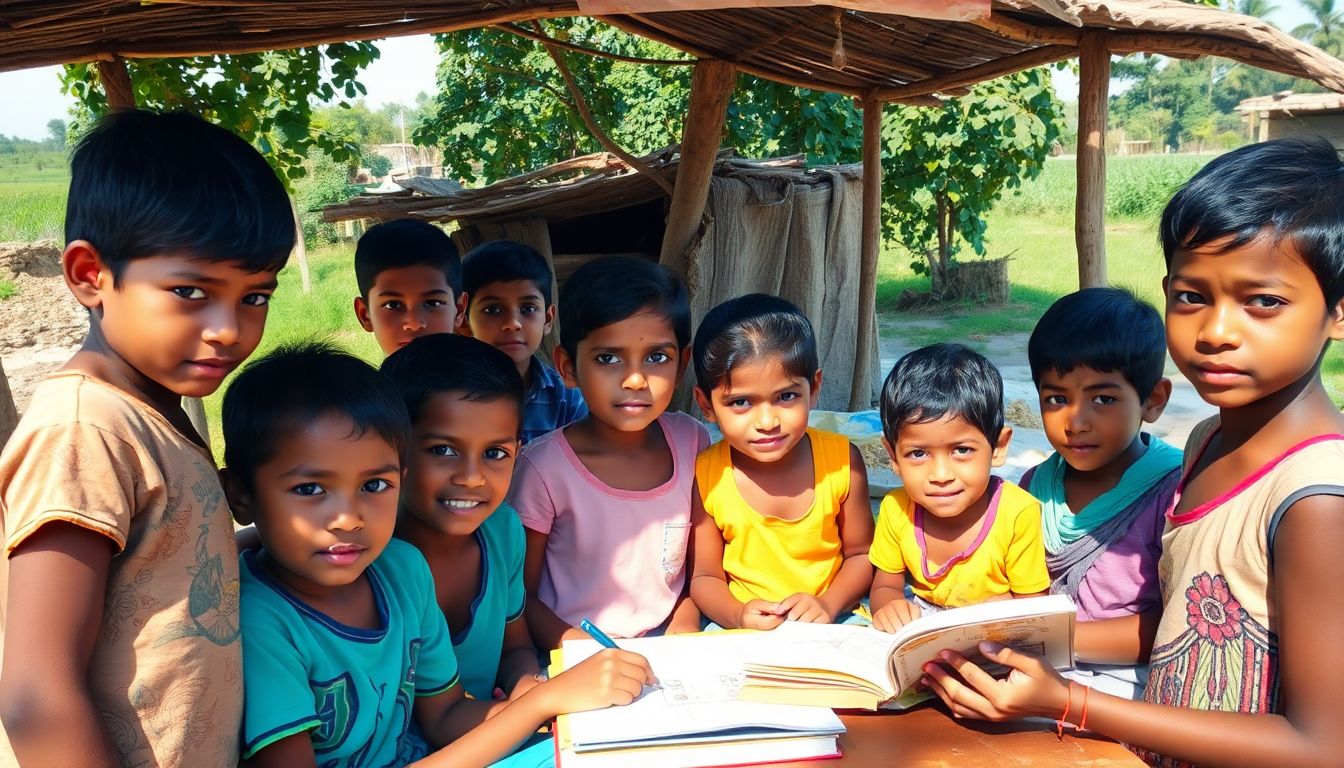
The education gap between rural and urban areas in India is a pressing issue. As cities thrive with educational opportunities, many rural communities face significant barriers that undermine their educational development. This article explores the challenges and potential solutions for bridging the education gap in rural India, creating a brighter future for millions of children.
The Stark Reality of Rural Education
The Widening Divide: Statistics on Rural vs. Urban Education Access
Rural India contains about 68% of the population, yet the quality of education is starkly different from urban areas.
- According to various reports, rural schools often have far fewer resources.
- Enrollment rates in rural schools hover around 70%, while urban schools see rates of over 90%.
- Dropout rates in rural areas can be as high as 40% by the 10th grade.
The Ripple Effect: Consequences of Limited Education in Rural Communities
Limited access to education creates a cycle of poverty:
- Low educational attainment restricts employment options.
- Health outcomes worsen due to uneducated communities.
- Children miss opportunities for vocational training, stunting local economic growth.
A Call to Action: The Urgent Need for Educational Reform
Rural education needs urgent reforms. Without changes, generations will face overwhelming challenges. It’s crucial for policymakers, NGOs, and communities to unite and take decisive actions now.
Infrastructure Deficiencies: The Foundation of the Problem
Lack of Schools and Qualified Teachers: A Geographic and Resource Issue
Many villages lack proper schools.
- Some children travel over five kilometers to attend classes.
- Qualified teachers are often scarce, leading to classes with untrained personnel.
Inadequate Resources and Technology: Limited Access to Learning Materials
Schools frequently lack basic materials:
- Textbooks and learning aids are missing.
- Technology, such as computers, is virtually non-existent.
Poor Infrastructure: Impact of Transportation and Accessibility
Poor roads and inadequate transportation hinder access to education:
- Some students can’t attend school due to unsafe or long travel routes.
- Accessibility issues particularly affect girls, who may need to stay home.
Socioeconomic Barriers to Education
Poverty and Child Labor: Competing Priorities for Rural Families
Poverty forces many families to prioritize work over education.
- Children often help with farming or other jobs, sacrificing their studies.
- Families may rely on their children’s labor for survival.
Gender Inequality: Discriminatory Practices Against Girls’ Education
Gender biases limit girls’ access to education:
- Societal norms may prioritize boys’ education over girls’.
- Safety concerns about traveling far for school deter families from sending daughters.
Caste Systems and Social Exclusion: Marginalization of Specific Communities
The caste system excludes many from educational opportunities:
- Children in lower castes often face prejudice and discrimination.
- Schools may refuse to admit marginalized students, reinforcing existing inequalities.
Curriculum and Pedagogical Challenges
Relevance of Curriculum: Addressing Local Needs and Aspirations
Many curricula do not reflect the local context:
- Students learn about distant places, not their own communities.
- This disconnect can lead to a lack of interest in studies.
Teacher Training and Development: Equipping Educators for Rural Settings
Training for teachers is often inadequate:
- Many teachers lack understanding of local culture or language.
- Professional development opportunities are limited.
Innovative Teaching Methodologies: Adapting to Diverse Learning Styles
One-size-fits-all approaches don’t work:
- Teachers need to use diverse methods to cater to various learning styles.
- Interactive and hands-on learning can engage students better.
Government Initiatives and Policy Recommendations
Analyzing Existing Government Programs: Strengths and Weaknesses of Current Policies
The government has implemented many programs, but gaps remain:
- Initiatives like Mid-Day Meal Scheme offer some support.
- However, these programs lack reach and effectiveness.
Policy Suggestions for Enhanced Access and Quality: Recommendations for Effective Intervention
To improve rural education:
- Increase funding for schools in rural areas.
- Ensure all schools meet basic infrastructure standards.
Collaboration and Partnerships: Public-Private Partnerships and Community Involvement
Partnerships can drive improvements:
- NGOs can offer support in training teachers and resources.
- Community involvement fosters ownership and accountability.
Technological Solutions and Digital Literacy
Leveraging Technology for Education: Online Learning Platforms and Resources
Technology can bridge the gap:
- Online platforms can provide lessons when local schools are lacking.
- Digital resources can enhance learning experiences.
Bridging the Digital Divide: Ensuring Access to Technology in Rural Areas
Access remains a challenge:
- Initiatives should aim to provide internet and devices to rural areas.
- Community hubs can serve as resource centers for digital learning.
Promoting Digital Literacy: Empowering Students and Teachers with Essential Skills
Digital literacy is vital:
- Training programs can equip both students and teachers with necessary skills.
- Knowledge of technology opens new opportunities for education and employment.
Conclusion: Investing in Rural Education for a Brighter Future
Key Takeaways: Recap of Main Challenges and Potential Solutions
The challenges facing rural education are daunting but not insurmountable.
- Infrastructure, socioeconomic barriers, and curriculum relevance must be addressed.
- Collaboration among stakeholders is vital for meaningful change.
Call to Action: Encouraging Individual and Collective Efforts
Investing in rural education is investing in a nation’s future. Each of us can play a role—advocating for policy change, volunteering, or supporting local initiatives can help bridge the education gap. Together, we can ensure that the children of rural India have the chance to learn and thrive.